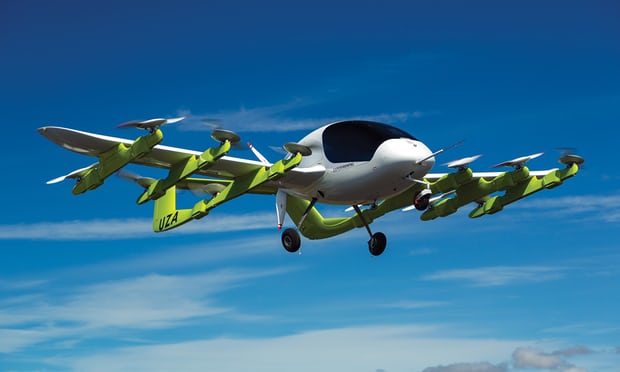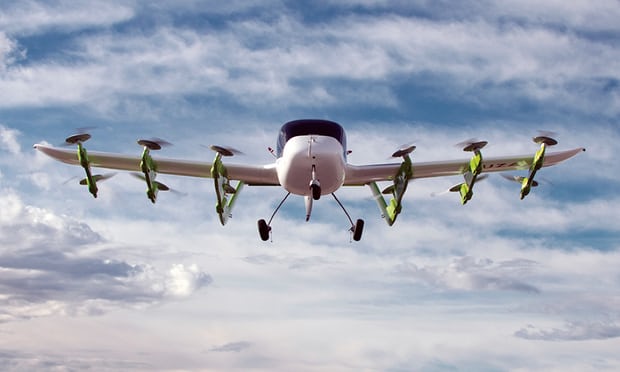Larry Page's Kitty Hawk unveils autonomous flying taxis
The billionaire-backed firm has announced that it will begin the regulatory approval process required for launching its autonomous passenger-drone system in New Zealand, after conducting secret testing under the cover of another company called Zephyr Airworks.
The firm’s two-person craft, called Cora, is a 12-rotor plane-drone hybrid that can take off vertically like a drone, but then uses a propeller at the back to fly at up to 110 miles an hour for around 62 miles at a time. The all-electric Cora flies autonomously up to 914 metres (3,000ft) above ground, has a wingspan of 11 metres, and has been eight years in the making.
 |
| Kitty Hawk’s Cora, a 12-rotor plane-drone hybrid that can take off vertically like a drone. Photograph: Kitty Hawk |
“Designing an air taxi for everyday life means bringing the airport to you. That’s why Cora can take off and land like a helicopter, eliminating the need for runways,” says Kitty Hawk. “Cora has the potential to transform spaces like rooftops and parking lots into places to take off right from your neighbourhood.”
Kitty Hawk is personally financed by Page and is being run by former Google autonomous car director Sebastian Thrun. The company is trying to beat Uber and others to launching an autonomous flying taxi service.
The company hopes to have official certification and to have launched a commercial service within three years, which will make it the first to do so. But its achievement will also propel New Zealand to the front of the pack as the first country to devise a certification process. The country’s aviation authority is well respected in the industry, and is seen as pioneering.
 |
| Kitty Hawk is already working on an app and technology to allow customers to hail flying taxis as they would an Uber. Photograph: Kitty Hawk |
Kitty Hawk is already working on an app and technology to allow customers to hail flying taxis as they would an Uber, but whether Page, Thrun and their team will actually be able to deliver within three years remains to be seen.
Many companies have promised great leaps but failed to deliver meaningful progress towards a Jetsons-like future, from Uber’s Elevate to China’s Ehang.
Even if Kitty Hawk hits all its projected milestones and launches commercially, there’s then the matter of persuading people to actually use it.
“Cora will combine self-flying software with expert human supervision, so you can enjoy the ride,” says the company, which has fitted three independent flight systems, made the rotors operate independently and given Cora a parachute in case things go wrong.

